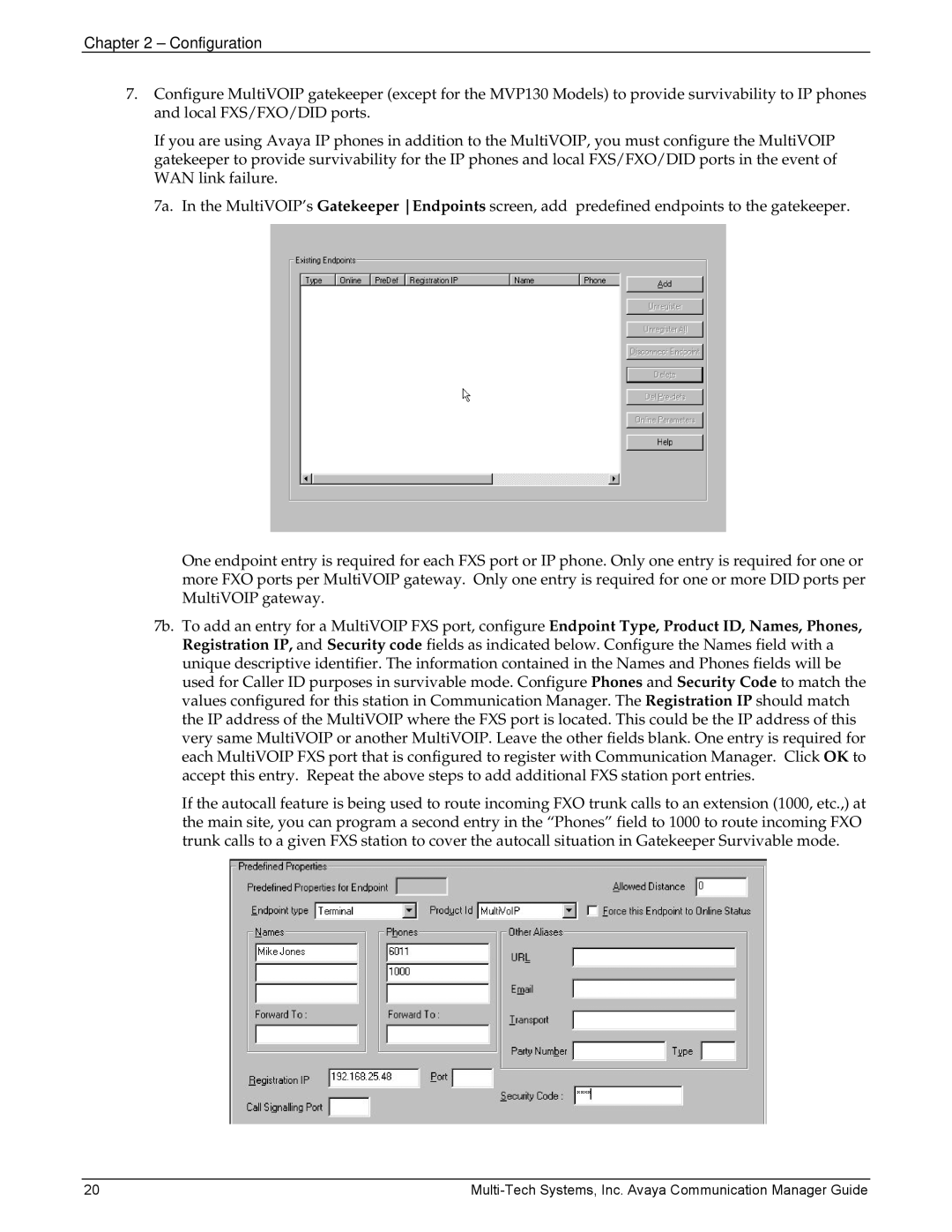
Chapter 2 – Configuration
7.Configure MultiVOIP gatekeeper (except for the MVP130 Models) to provide survivability to IP phones and local FXS/FXO/DID ports.
If you are using Avaya IP phones in addition to the MultiVOIP, you must configure the MultiVOIP gatekeeper to provide survivability for the IP phones and local FXS/FXO/DID ports in the event of WAN link failure.
7a. In the MultiVOIP’s Gatekeeper Endpoints screen, add predefined endpoints to the gatekeeper.
One endpoint entry is required for each FXS port or IP phone. Only one entry is required for one or more FXO ports per MultiVOIP gateway. Only one entry is required for one or more DID ports per MultiVOIP gateway.
7b. To add an entry for a MultiVOIP FXS port, configure Endpoint Type, Product ID, Names, Phones,
Registration IP, and Security code fields as indicated below. Configure the Names field with a unique descriptive identifier. The information contained in the Names and Phones fields will be used for Caller ID purposes in survivable mode. Configure Phones and Security Code to match the values configured for this station in Communication Manager. The Registration IP should match the IP address of the MultiVOIP where the FXS port is located. This could be the IP address of this very same MultiVOIP or another MultiVOIP. Leave the other fields blank. One entry is required for each MultiVOIP FXS port that is configured to register with Communication Manager. Click OK to accept this entry. Repeat the above steps to add additional FXS station port entries.
If the autocall feature is being used to route incoming FXO trunk calls to an extension (1000, etc.,) at the main site, you can program a second entry in the “Phones” field to 1000 to route incoming FXO trunk calls to a given FXS station to cover the autocall situation in Gatekeeper Survivable mode.
20 |
